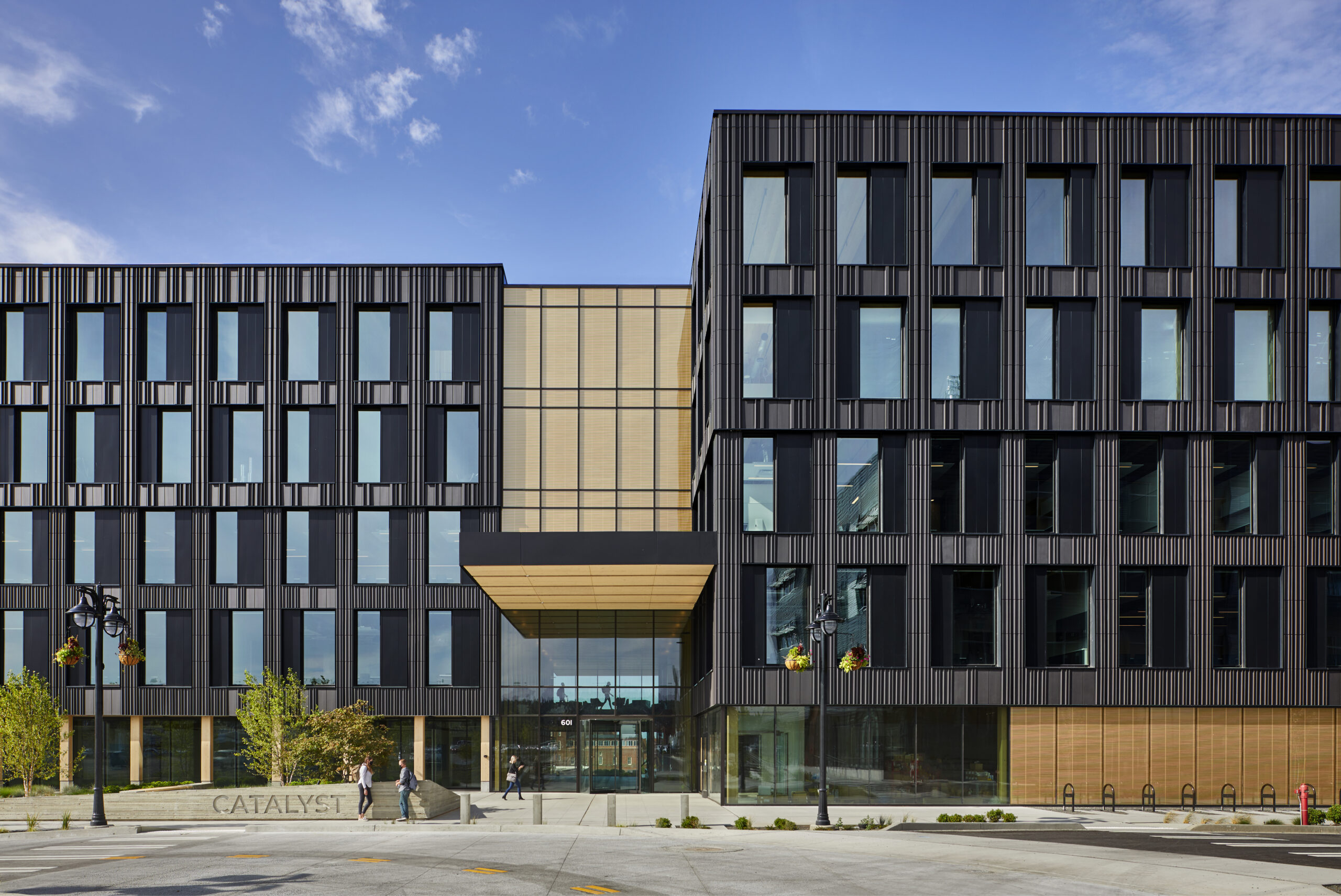- All Posts
- Easing Building Performance Compliance through Trusted Partnerships
Easing Building Performance Compliance through Trusted Partnerships
Developing a holistic compliance roadmap lessens financial burdens and drives long term efficiencies
As sustainability and decarbonization efforts ramp up across the country, building performance legislation and mandates push building owners to move the needle toward increased energy conservation. Buildings account for up to 75% of city-wide greenhouse gas emissions in most cities across the U.S., making building performance mandates a key tool to lower urban emissions at scale.
The pressure to implement building compliance standards is intensifying as the nation works to cut emissions by up to 52% come 2030. By this time in 2024, 20% of U.S. buildings square footage is projected to be impacted by one or more emissions compliance requirements. Washington, Oregon, Colorado and Minnesota are just a few states leading the charge nationwide.
The National Climate Task Force and federal leaders are not the only leaders looking to implement building performance regulations. State and local governments are quickly developing their own decarbonization plans and relative compliance standards. Some geographies may have multiple programs including city and state mandates, each impacting buildings differently. Treating each compliance program as mutually exclusive may prove costly for building owners with multiple programs to navigate.
For portfolio managers with multiple buildings, leveraging program similarities may make navigating the complexities of implementation easier. Many compliance programs are likely to include similar measurements like Energy Use Index (EUI) and Greenhouse Gas (GHG) reporting and targeting as well as a fine structure for noncompliance. Choosing the right partner – with a robust history supporting clients in achieving compliance with ever-expanding and complicated legislation – can ensure success in developing an energy reduction strategy and timely implementation of prescribed measures. While the impacts of navigating multiple compliance programs is still to be seen as legislation is ramping up across the country, McKinstry has proudly supported singular programs and a diverse set of clients across the country in achieving their EUI and building compliance standard targets.
In the Pacific Northwest, McKinstry has helped commercial clients with unique building needs address and comply with local building performance standard programs. Given the unique use cases of spaces like museums and universities, a one-size-fits-all compliance program proved ineffective.
For museums, EUI targets should account for the unique temperature and humidity control requirements needed for artifact preservation. Initially, compliance program rules assumed that operating hours would align with when the facility is open to the public, but artifacts and art need stable temperature and humidity 24/7. This misalignment meant EUI targets were much lower than actual operating conditions require. Working with local Commerce officials to address this issue, McKinstry advocated for unique use case clients to obtain exceptions and rule adjustments. The collaboration resulted in the adjustment of EUI targets and operating hours calculations necessary for 24/7 artifact containing zones. This adjustment substantially reduced the impact of EUI targets on museum clients and partners, making it possible for them to both meet the building performance standards requirements and carry out their primary goal of preserving and displaying impactful artifacts for the education of the general public.
McKinstry is dedicated to charting an equitable zero-carbon future and has worked collaboratively with clients across the country to develop streamlined compliance roadmaps. From Energize Denver and Colorado Building Performance Standards to Seattle Building Tune Up and the Oregon Climate Resilience programs, McKinstry offers a robust suite of services and teams to help clients navigate every step of compliance including benchmarking and verification, financing strategy, implementation and energy management and maintenance.
Explore Other Insights

Dawson Ventures’ Lab Space
McKinstry’s new lab space redefines how we innovate and collaborate in the built environment. Located at our headquar…

McKinstry Adds Expertise to Environmental Health and Safe…
When speaking of what led Stephen to the world of Environmental Health and Safety (EHS), the first thing that comes t…

Industry Ecosystems Are Changing the Construction World
By Donald Chung, Program Director, Dawson Ventures Innovation Is Set To Transform the Construction Sector Innov…